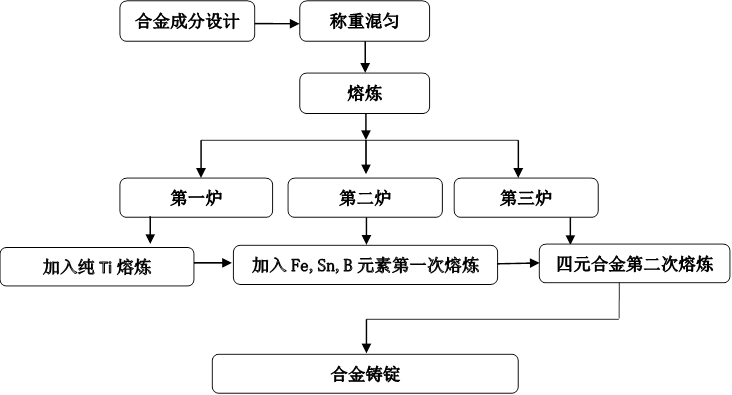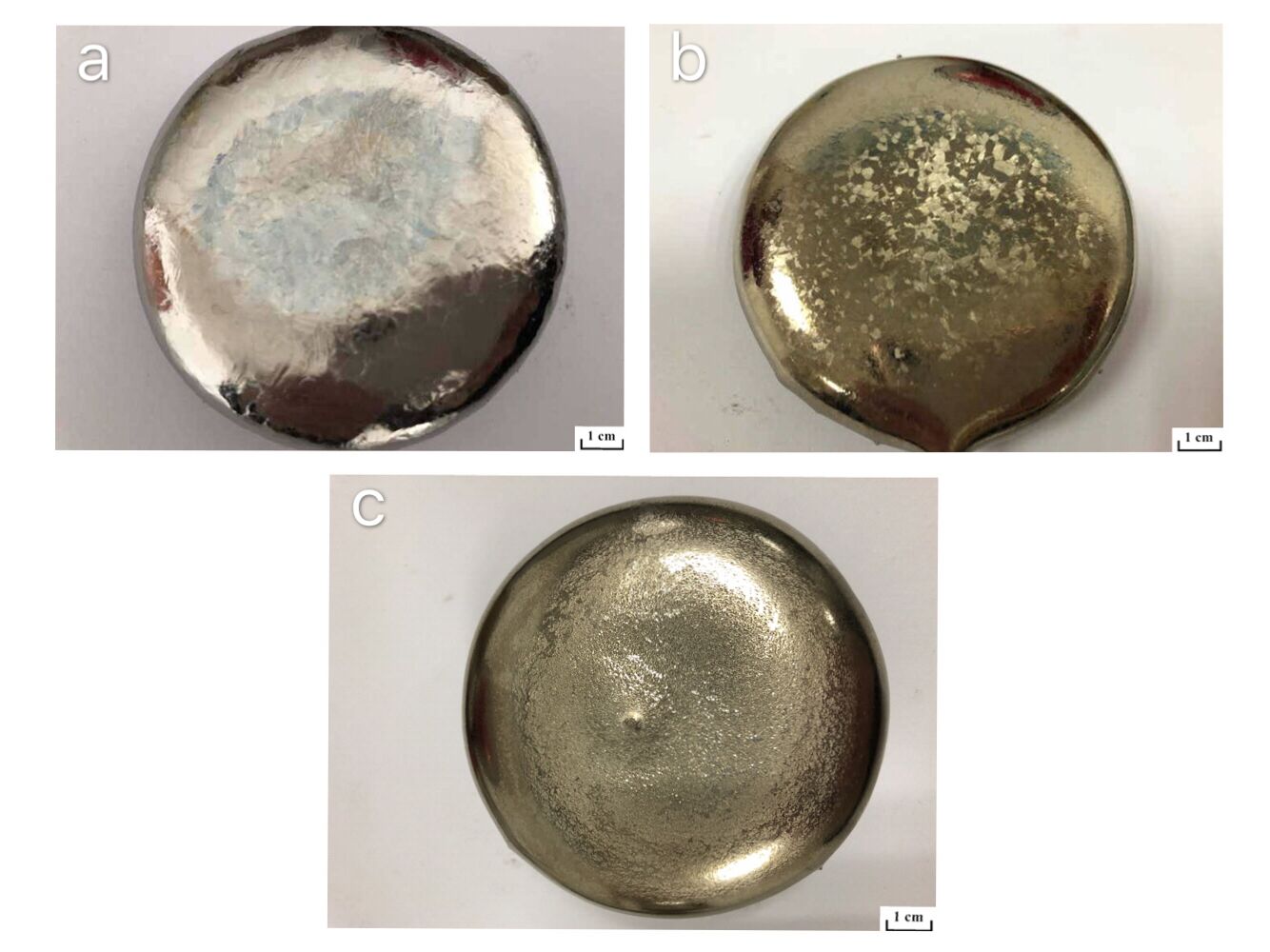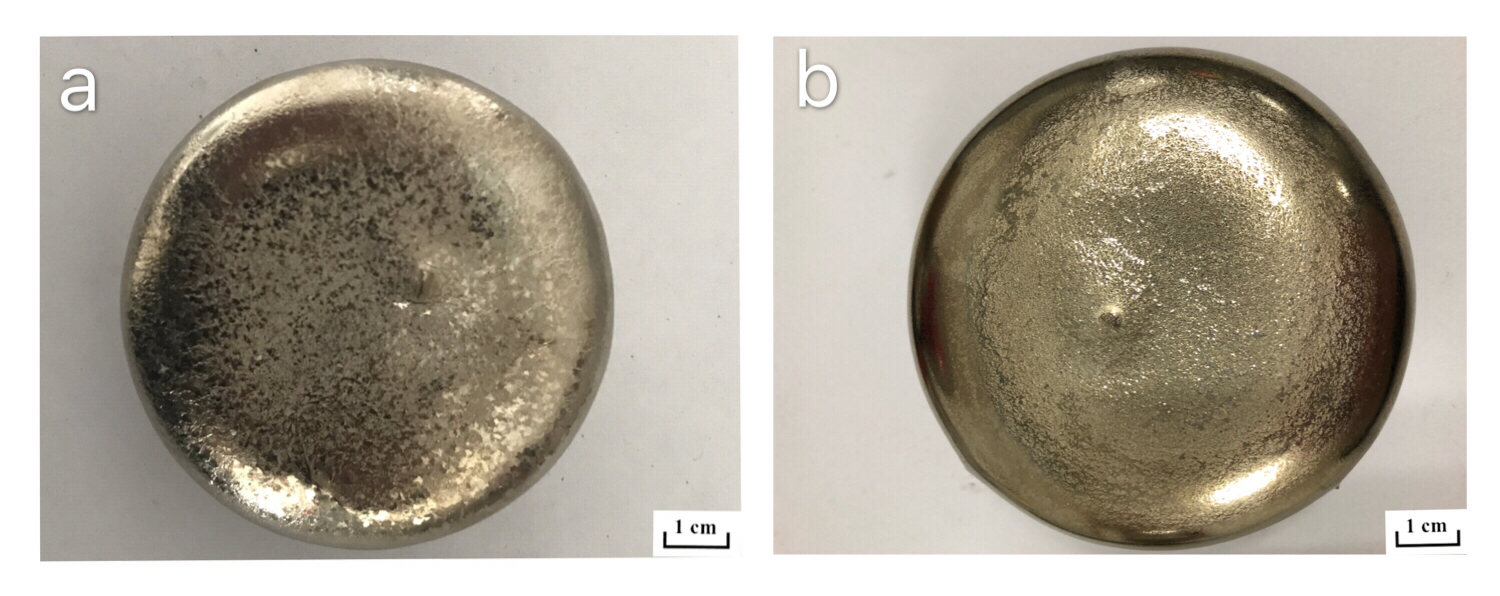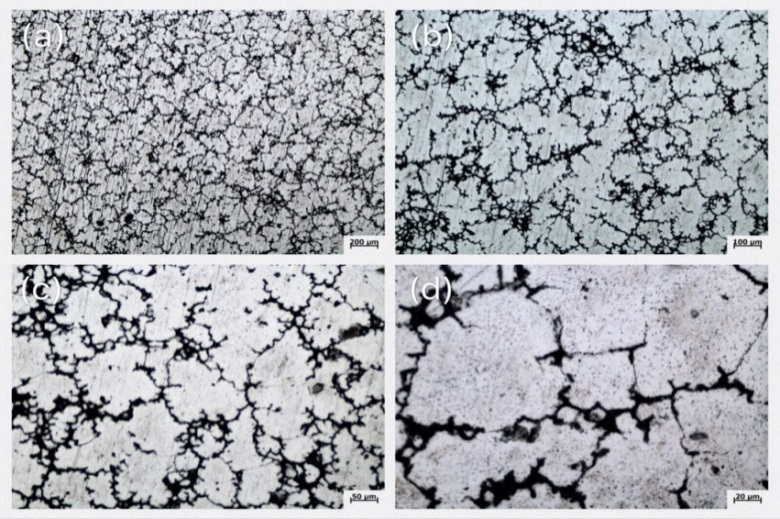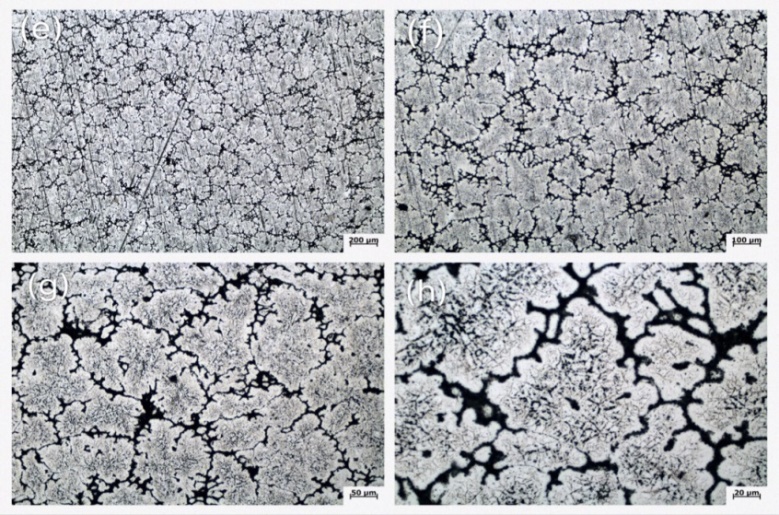Ti73.3Fe24.6Sn2B0.1合金的悬浮熔炼及其组织特征毕业论文
2020-07-09 20:23:08
摘 要
在钛合金基础的合金体系中,元素选择是十分重要的。Fe合金元素是一种beta相稳定元素,它有利于beta稳定相区扩大和热加工性能提升;Sn元素可以有效地改善熔炼过程中的熔体的表面张力,从而影响凝固过程,达到改善铸造组织的目的;B元素能够对钛合金进行细晶强化,产生微量调节的作用。本研究主要对四元合金进行悬浮熔炼,通过金相观察和电化学测试来研究Ti73.3Fe24.6Sn2B0.1四元合金的组织特征和合金性能。通过金相观察、XRD衍射分析等来探讨三个位置组织与的变化。发现Ti73.3Fe24.6Sn2B0.1四元合金成分主要是β-Ti与TiFe,其中β-Ti含量最高,内部和中部组织比外部更稳定有序。通过开路电位、极化曲线等电化学测试,揭示Ti73.3Fe24.6Sn2B0.1四元合金的内部中部外部三个位置的耐腐蚀性能。研究表明,Ti73.3Fe24.6Sn2B0.1四元合金铸锭的中部最耐腐蚀。通过硬度测试发现可知中部和外部的显微硬度相近,都高于内部。
关键词:Ti73.3Fe24.6Sn2B0.1 真空悬浮熔炼 金相组织 电化学分析
Levitation melting of Ti73.3Fe24.6Sn2B0.1 alloy and its microstructure characteristics
Abstract
Chemical composition design is very important in Ti-based alloy system. The Fe alloy element is a stabilizer of β phase, which is beneficial to the expansion of the stable phase region of β and the improvement of the thermal processing property. By addition of the Sn element can effectively improve the surface tension of the melt solution in the melting process, thus influence the solidification process and improve the casting organization. The addition of B element can effectively strengthen the fine grain and realize the microstructure optimization. In this study, suspension melting of quaternary alloys is the main method, and then the microstructure characteristics and alloy properties of the Ti73.3Fe24.6Sn2B0.1 quaternary alloy were investigated through metallographic observation and electrochemical measurements, such as the metallographic observation, XRD diffraction analysis, polarization curves, etc. were used to investigate the changes between the three positions and the microstructure of as-cast alloys. It can be found that the composition of the Ti73.3Fe24.6Sn2B0.1 quaternary alloy is mainly consisted of β-Ti and TiFe phases, with the highest content of β-Ti, the internal and central structures are more stable and orderly piled up than the external. Through electrochemical tests, such as open circuit potential and polarization curves, the corrosion resistance at three locations of the Ti73.3Fe24.6Sn2B0.1 quaternary alloy was revealed. The experimental results show that the internal of Ti73.3Fe24.6Sn2B0.1 quaternary alloy ingot is the most resistant to corrosion. Through hardness test, the central and the external microstructure have the similar hardness, both are higher than the internal.
Keywords: Ti73.3Fe24.6Sn2B0.1; vacuum suspension melting; metallographic structure; electrochemical analysis
目录
摘 要I
ABSTRACT II
第一章 绪论 1
1.1 钛合金的发展与应用 1
1.1.1 钛合金发展概述 1
1.1.2 钛合金在航空航天领域的发展应用 1
1.1.3 钛合金在海洋中的发展应用 1
1.1.4 钛合金在舰船上的发展应用 2
1.1.5 钛合金在其他领域的发展应用 2
1.2 钛合金材料成分选择控制 3
1.2.1 成分含量选择 3
1.2.2 铁元素选择 4
1.2.3 锡元素选择 4
1.2.4 硼元素选择 4
1.3 钛合金熔炼方式 5
1.3.1 冷坩埚悬浮熔炼技术 5
1.3.2 主要熔炼设备 5
1.4 钛合金研究内容和方法 6
1.4.1 研究内容 6
1.4.2 研究方法 6
第二章 实验部分 7
2.1 研究仪器设备 7
2.2 实验材料 7
2.3 合金铸锭熔炼 8
2.4 金相组织观察 8
2.5 X射线衍射分析 8
2.6 极化曲线与开路电位测试 9
2.7 显微维氏硬度测试 9
第三章 实验结果与讨论 10
3.1 实验熔炼实际情况 11
3.2 实际熔炼温度变化 11
3.3 铸锭表面观察 12
3.4 金相组织 14
3.4.1 铸锭中内外三部分显微组织图 14
3.4.2 与TiFe二元合金的图进行对比 15
3.5 XRD衍射分析 16
3.6 开路电位实验 16
3.7 极化曲线实验 17
3.8 显微硬度 19
第四章 结论与展望 21
参考文献 23
致谢 25
第一章 绪论
1.1 钛合金的发展与应用
1.1.1 钛合金发展概述
钛是地壳中含量位列第四的结构金属,性质活泼且易生成氧化物,钛元素分布比较广泛,它的含量在地壳质量中超过0.4%,除氧、硅、铝、铁、钙、钠、钾、镁、氢之外,钛的元素含量排在第10位[1]。随着钛工业的迅速发展,从钛合金成分设计开发的不断创新,到相关熔炼、铸造、锻造和热处理技术的不断进步,针对不同使用条件和应用领域的不同牌号的钛合金孕育而生。钛工业发展仍然以经济利益为中心,依靠钛合金成分种类的多样化和生产设施的自动化实现钛材的大规模生产来降低成本,从而扩大钛合金的实际应用范围[2,3,4]。
1.1.2 钛合金在航空航天领域的发展应用
相关图片展示:
